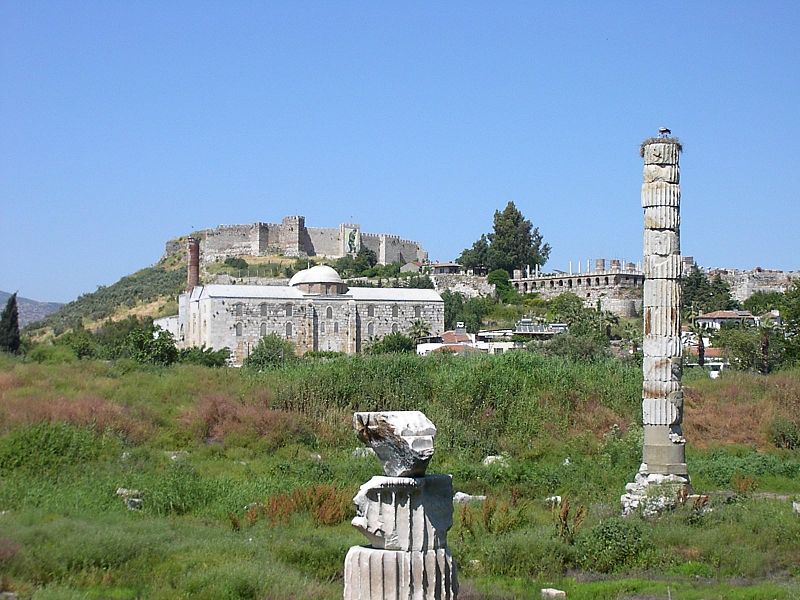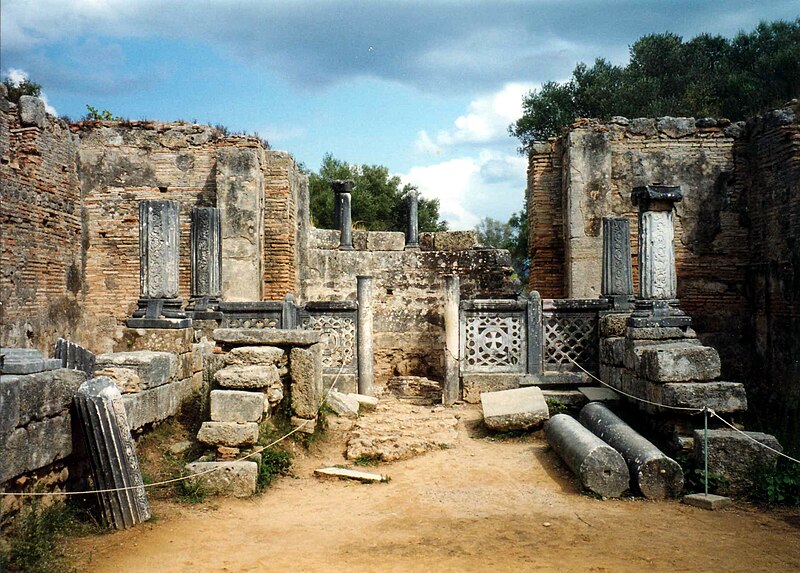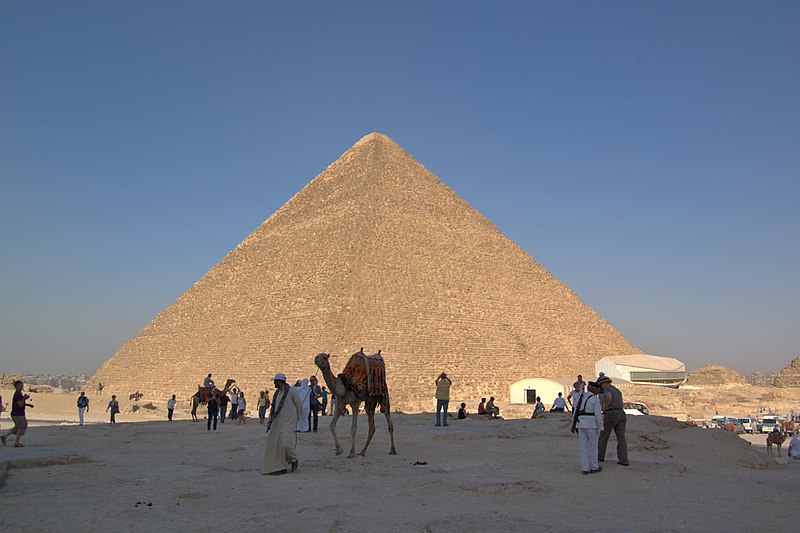
The Great Mosque of Kairouan (جامع القيروان الأكبر), also known as the Mosque of Uqba (Arabic: جامع عقبة بن نافع), is one of the most important mosques in Tunisia, situated in the UNESCO World Heritage town of Kairouan.
Established by the Arab general Uqba ibn Nafi in 670 AD (the year 50 according to the Islamic calendar) at the founding of the city of Kairouan, the mosque is spread over a surface area of 9,000 square metres and it is one of the oldest places of worship in the Islamic world, as well as a model for all later mosques in the Maghreb. The Great Mosque of Kairouan is one of the most impressive and largest Islamic monuments in North Africa, its perimeter is almost equal to 405 metres (1,328 feet). This vast space contains a hypostyle prayer hall, a huge marble-paved courtyard and a massive square minaret. In addition to its spiritual prestige, the Mosque of Uqba is one of the masterpieces of both architecture and Islamic art.
Under the Aghlabids (9th century), huge works gave the mosque its present aspect.The fame of the Mosque of Uqba and of the other holy sites at Kairouan helped the city to develop and repopulate increasingly. The university, consisting of scholars who taught in the mosque, was a centre of education both in Islamic thought and in the secular sciences. Its role can be compared to that of the University of Paris in the Middle Ages.With the decline of the city of Kairouan from the mid 11th century, the centre of intellectual thought moved to the University of Ez-Zitouna in Tunis.see more
 This is an amazing site located in between the border of Zambia and
North of Zimbabwe along the Zambezi River. Although Victoria Falls is
neither the widest nor the highest waterfall on Earth, this breathtaking
waterfall occupies around 2 kilometer mile and is 354 feet high. It
emits mist that is spotted by somebody about 20 kilometers away and
hence it’s traditional “Mosi-oa Tunya” that simply means “thundering
smoke”. It was named Victoria Falls by a Scottish explorer David
Livingstone. He’s believed to have been the first person from Europe to
visit Victoria Falls on 16 November 1855. By the end of the 90s around
300,000 visitors were seeing Victoria Falls each year, and it was
expected to increase to a million or more in the next decade. However,
today Victoria Falls has more visitors from Zimbabwe and Zambia than
from other countries in the world. The waterfall is accessible by train
and bus, and it’s rather cheap to reach, so why not visit this
beautiful place this year.
This is an amazing site located in between the border of Zambia and
North of Zimbabwe along the Zambezi River. Although Victoria Falls is
neither the widest nor the highest waterfall on Earth, this breathtaking
waterfall occupies around 2 kilometer mile and is 354 feet high. It
emits mist that is spotted by somebody about 20 kilometers away and
hence it’s traditional “Mosi-oa Tunya” that simply means “thundering
smoke”. It was named Victoria Falls by a Scottish explorer David
Livingstone. He’s believed to have been the first person from Europe to
visit Victoria Falls on 16 November 1855. By the end of the 90s around
300,000 visitors were seeing Victoria Falls each year, and it was
expected to increase to a million or more in the next decade. However,
today Victoria Falls has more visitors from Zimbabwe and Zambia than
from other countries in the world. The waterfall is accessible by train
and bus, and it’s rather cheap to reach, so why not visit this
beautiful place this year. 


 The approximate date of the statue (the third quarter of the 5th century
BC), was confirmed in the rediscovery (1954–1958) of Phidias' workshop,
sited more or less where Pausanias said the statue of Zeus was
constructed. Archaeological finds included tools for working gold and
ivory, ivory chippings, precious stones and terracotta moulds. Most of
the latter were used to create glass plaques, and to form the statue's
robe from sheets of glass, naturalistically draped and folded, then
gilded. A cup inscribed "Ανήκω σε Φειδία" or "I belong to Phidias" was
found at the site.
The approximate date of the statue (the third quarter of the 5th century
BC), was confirmed in the rediscovery (1954–1958) of Phidias' workshop,
sited more or less where Pausanias said the statue of Zeus was
constructed. Archaeological finds included tools for working gold and
ivory, ivory chippings, precious stones and terracotta moulds. Most of
the latter were used to create glass plaques, and to form the statue's
robe from sheets of glass, naturalistically draped and folded, then
gilded. A cup inscribed "Ανήκω σε Φειδία" or "I belong to Phidias" was
found at the site.




